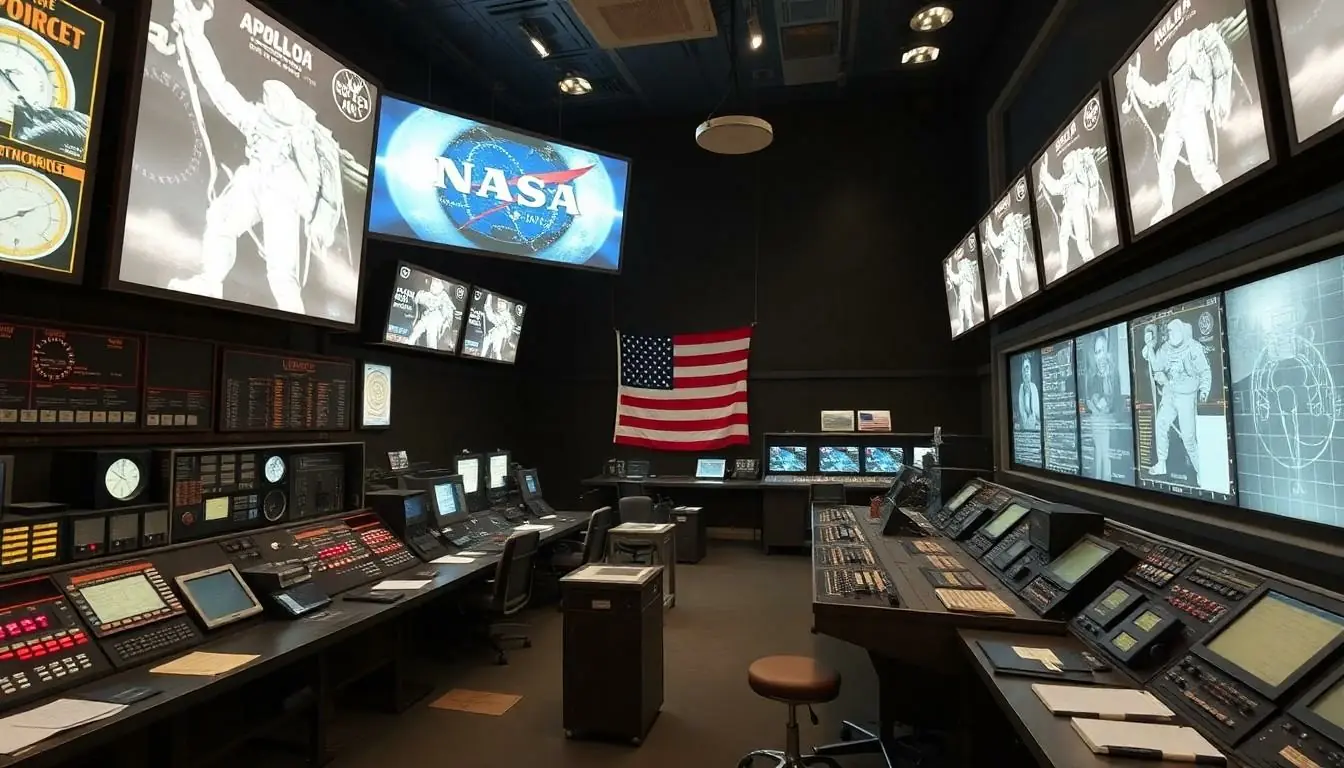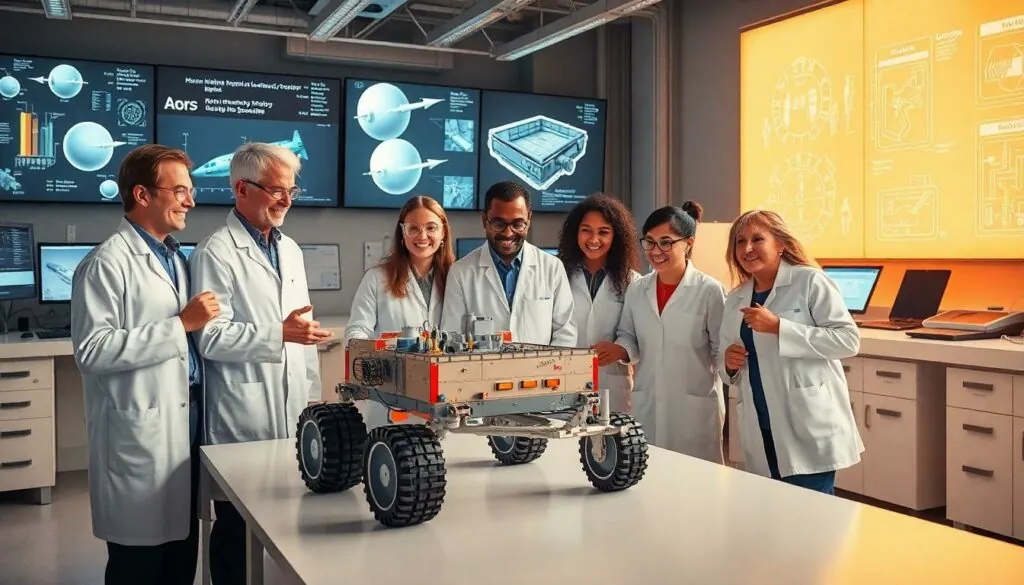Table of Contents
ToggleIn a universe where the only constant is change, technology in space is the ultimate game-changer. Imagine sending a selfie from Mars or streaming your favorite show from the Moon. It’s not just sci-fi anymore; it’s happening right now. As humans push the boundaries of exploration, innovative technologies are making the impossible possible, from reusable rockets to AI-driven spacecraft.
Overview of Technology in Space
Technology in space has evolved dramatically, enabling unprecedented exploration and research. Enhanced communication systems facilitate real-time data transmission between Earth and spacecraft. Advanced satellite systems provide global positioning and weather monitoring, aiding both terrestrial and extraterrestrial missions.
Innovative propulsion technologies, such as ion thrusters, improve fuel efficiency while increasing payload capacity. Spacecraft equipped with artificial intelligence can autonomously navigate complex environments, optimizing mission outcomes. Reusable rockets, pioneered by companies like SpaceX, significantly reduce launch costs, promoting commercial ventures in space.
Robotic systems play a vital role in space exploration. Rovers on Mars gather essential geological data and investigate the planet’s climatic history. Drones equipped with high-resolution cameras capture stunning images of celestial bodies, enhancing scientific understanding.
Energy generation in space relies on solar power, with solar panels being a standard feature on most satellites. Nuclear power technology, under exploration, promises a reliable energy source for future deep space missions. These advancements provide solutions for long-duration travels where solar energy becomes less feasible.
Data analysis technologies enable researchers to process vast amounts of information quicker than ever before. Machine learning algorithms identify patterns within datasets that help scientists make significant discoveries about the universe. Simulation technologies also allow engineers to model complex scenarios, ensuring robust designs for new spacecraft.
Materials science innovations contribute to developing lightweight, durable materials suitable for space conditions. Heat-resistant ceramics and radiation-shielding composites enhance spacecraft durability and safety.
Emerging technologies in space not only transform how humanity explores the universe but also foster collaborations among nations and private entities. Technologies will continue evolving, pushing the boundaries of what is possible in space exploration.
Historical Development of Space Technology

Technology has significantly transformed the landscape of space exploration. Major innovations have shaped the capabilities of spacecraft and missions.
Early Innovations
Early innovations laid the groundwork for modern space technology. In the 1940s, rocket designs by pioneers like Wernher von Braun enabled advancements in propulsion systems. By the 1950s, the first successful satellite, Sputnik, was launched by the Soviet Union, demonstrating the feasibility of space travel. This event spurred competitive endeavors like the U.S. Explorer 1 satellite in 1958. Furthermore, the development of telemetry allowed for data collection and transmission from space, improving mission control.
Milestones in Space Exploration
Milestones in space exploration mark significant achievements in technology. The Apollo program, starting in the 1960s, culminated in the lunar landing of Apollo 11 in 1969, showcasing human space travel capabilities. In 1977, Voyager spacecraft launched to explore the outer planets, providing invaluable data about our solar system. The establishment of the International Space Station in 1998 marked a collaborative effort in space research. More recently, the Mars Rover Perseverance landed in 2021, equipped with advanced instruments for detailed planetary analysis. Each of these milestones reflects the evolving capabilities and ambitions of space technology.
Current Technologies in Use
Innovations in technology significantly shape capabilities in space exploration. Various sectors utilize advanced tools and systems to enhance missions.
Satellite Technology
Satellite systems play a crucial role in communication, navigation, and scientific research. High-resolution imaging satellites provide valuable data for Earth observation and disaster management. Global positioning satellites enable precise location tracking for navigation services. Weather satellites offer real-time updates on atmospheric conditions, benefiting both terrestrial and extraterrestrial operations. Recent advancements focus on small satellites, increasing the accessibility and cost-effectiveness of launching missions. Innovative satellite constellations like Starlink aim to deliver global internet coverage, revolutionizing connectivity in remote areas.
Space Robotics
Robotic systems contribute remarkably to space exploration and scientific research. Rovers, such as the Mars Perseverance, autonomously navigate challenging terrains while conducting experiments. Robotic arms on the International Space Station assist astronauts with repairs and experiments. Drones equipped with advanced imaging technologies provide aerial surveys on other planetary bodies. Innovations in artificial intelligence drive robotic systems to analyze data in real time, enhancing decision-making processes. Collaborative robotics enable human-robot interactions, increasing safety and efficiency during missions.
Propulsion Systems
Propulsion technologies are essential for spacecraft efficiency and mission success. Traditional chemical propulsion systems dominate current launches, providing immediate thrust for liftoff. Emerging ion thrusters demonstrate superior fuel efficiency by utilizing electric fields to accelerate ions. These advanced systems reduce the mass of propellant required for long-duration missions. Hybrid propulsion technologies integrate chemical and electric systems to optimize performance across various operational phases. Research into nuclear thermal propulsion indicates potential for deep space exploration, paving the way for future human missions to Mars and beyond.
The Future of Space Technology
Innovations in space technology are set to redefine exploration and research. Emerging trends promise to change how humanity interacts with the cosmos.
Emerging Trends
Robotic technology is advancing rapidly, enabling more sophisticated missions. Artificial intelligence plays a crucial role in navigation and data processing for spacecraft. Miniaturization of satellites results in smaller, more efficient systems that can achieve significant tasks. Innovative materials improve spacecraft durability and reduce weight, facilitating deep space travel. Partnerships between private companies and governmental agencies grow, allowing for shared resources and expertise. Additionally, in-situ resource utilization technologies strive to utilize planetary materials for energy and building, minimizing reliance on Earth-based supplies. These trends collectively enhance operational efficiency and expand mission possibilities.
Challenges and Opportunities
Exploring new frontiers in space technology carries inherent obstacles. Funding constraints often limit ambitious projects and research capabilities. Regulatory complexities hinder collaborations between private sectors and governments. Additionally, ensuring data security in an increasing number of connected devices poses challenges. Conversely, opportunities abound for breakthrough innovations in propulsion and energy systems. Potential collaborations among nations and corporations can lead to shared solutions addressing common challenges. Increased interest in space tourism promises to bolster economic investment and technological development. Addressing these challenges can pave the way for a future rich with possibilities in space exploration.
Impact of Technology in Space on Society
Technology in space significantly influences various aspects of everyday life. First, satellite systems play a vital role in global communication, navigation, and weather forecasting. Enhanced GPS technology, driven by advancements in space, improves accuracy for millions worldwide.
Society benefits from real-time data transmission, which enables better disaster response strategies. Improved forecasting tools help communities prepare for natural disasters like hurricanes or floods. Researchers analyze vast amounts of data from space missions, leading to new discoveries that enhance scientific knowledge and innovation.
Healthcare advancements also stem from space technology. Innovations in materials science create more effective medical equipment and diagnostic tools. Telemedicine, facilitated by satellite communication, offers remote healthcare solutions to underserved populations.
Agricultural practices improve through satellite imagery, assisting farmers in monitoring crop health and optimizing resource use. Earth observation technologies help in managing natural resources more efficiently, promoting sustainability.
Educational outreach benefits from space technology. Students engage with interactive platforms that provide real-time data from space missions. This access to current information fosters interest in STEM fields and encourages future generations of scientists and engineers.
Economic opportunities arise from collaborations between governmental agencies and private companies. Partnerships drive technological advancements that lead to job creation in aerospace industries. These innovations inspire interest in space tourism, contributing to a new economic sector.
In addition, societal awareness of environmental issues increases through satellite monitoring of climate change. Space-based data provides insights into global patterns and trends that inform policy decisions. Thus, the impact of technology in space continues to resonate throughout society, shaping a more informed, innovative, and interconnected world.
The advancements in technology are reshaping the landscape of space exploration in unprecedented ways. Innovations not only enhance scientific research but also foster collaboration among nations and private entities. As humanity pushes further into the cosmos, these technologies promise to unlock new possibilities and insights that were once unimaginable.
The journey ahead may present challenges but the potential for breakthrough innovations remains immense. With a focus on sustainable practices and partnerships, the future of space exploration looks bright. As technology continues to evolve, it will undoubtedly lead to exciting discoveries that deepen our understanding of the universe and our place within it.





